- Price: $59.99 USD (digital & physical); $99.99 for Digital Deluxe Version with full game, artbook/soundtrack, & season pass
- Developer: Omega Force
- Publisher: KOEI TECMO AMERICA
- Release Date: September 29, 2023
A review code was kindly provided by ONE PR Studio on behalf of Omega Force and KOEI TECMO AMERICA. We thank them for being able to cover something they’ve worked so hard on.
Fate/Extra was my first experience with the Fate series back in 2011 on PSP. I loved that game, and found the “True Name” aspect of Servants especially fascinating. That game was turn-based, but the concept of the Holy Grail War remains key in Fate/Samurai Remnant, an action RPG now available on Switch, PS4/5, and PC.
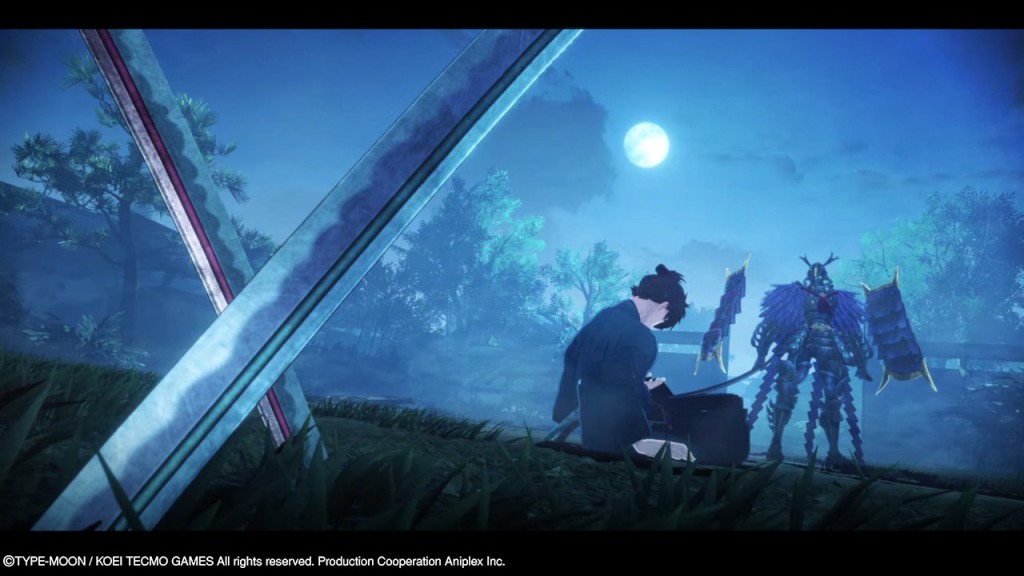
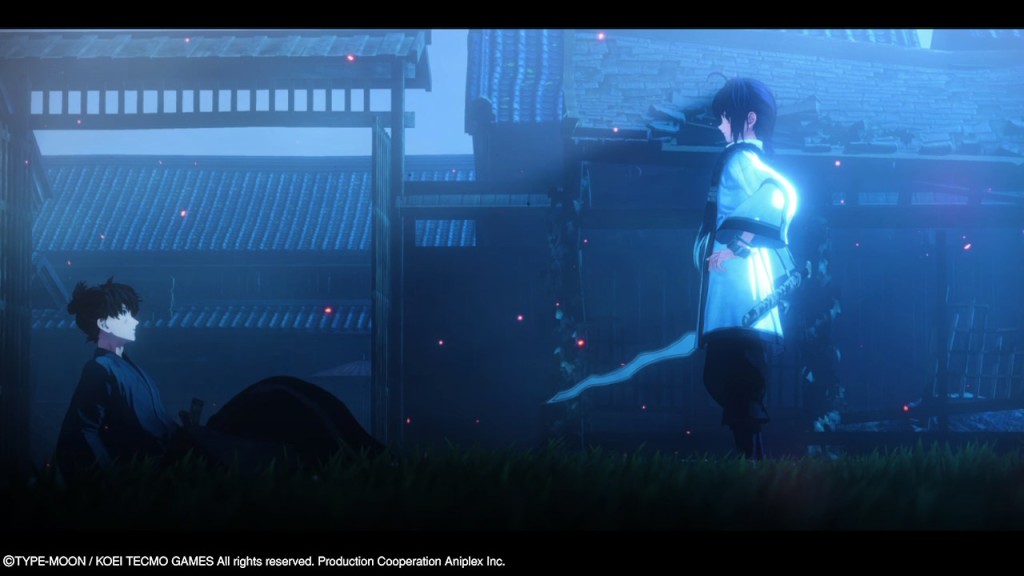
Here you will play as Miyamoto Iori, a young man living in Edo in mid-seventeenth century Japan. He continues to practice his swordsmanship even in slightly more peaceful times. One night he is attacked, and just when he’s about to be cut down by a mysterious armored figure, Saber appears to defend him.
Saber explains that she is a Heroic Spirit summoned to act as his Servant in the Waxing Moon Ritual, a destructive fight to the death that grants the winning pair’s wish. Iori’s pursuers are one of the Master-Servant pairs participating in the ritual; there are six of these pairs to worry about.
Iori is extremely unhappy about the violence affecting the people of Edo – many of the other participants do not appear to care if they burn everything to the ground and harm innocent bystanders. And the ritual is said to be corrupting the land, causing monsters to appear. Between the Master-Servant duos, monsters, and the cruelty of humans who aren’t involved in the ritual, Iori and Saber are in for a rough time.
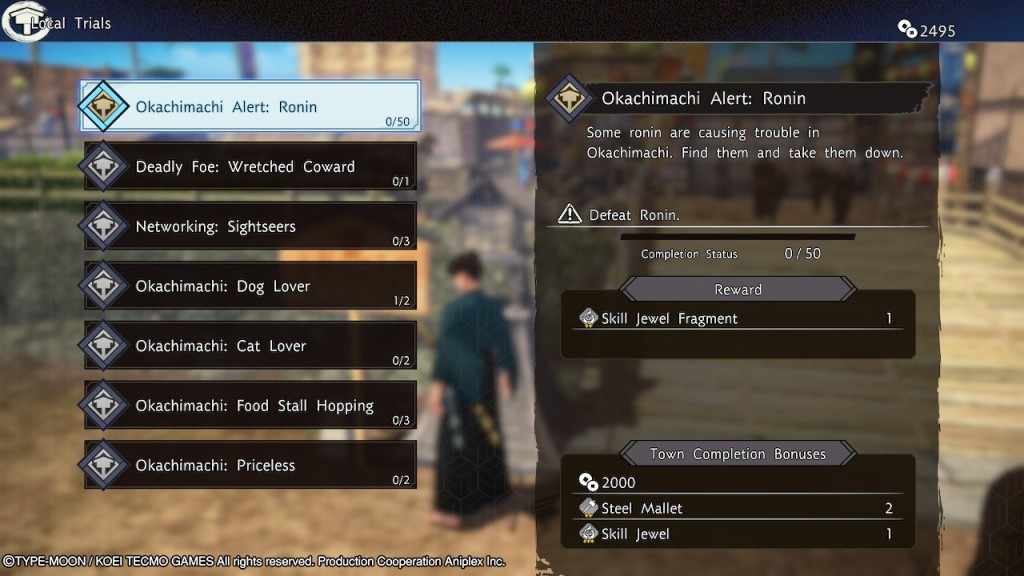
They have to run around Edo searching for clues as to the other pairs’ whereabouts, but sadly the ritual doesn’t pay expenses for its participants. You can accept commissions from the constable and other NPCs to earn money and items, and each area has Trials to complete for similar rewards.
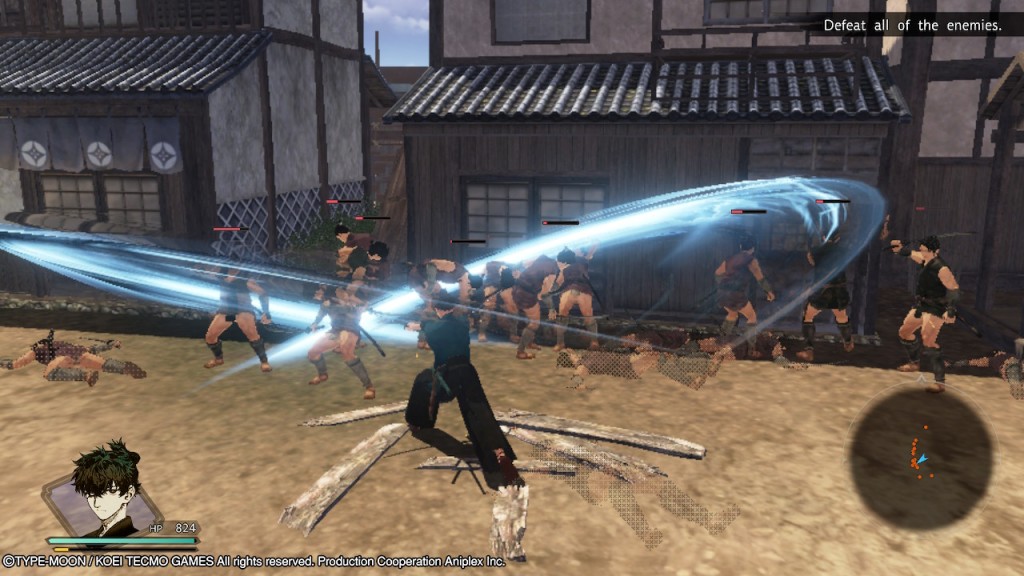
Some of these requests involve fighting large mobs of rogue swordsmen or monsters in each area. Battles consist of Musou-style action combat with a pretty decent variety of damage-dealing moves. Over the course of the game, Iori will learn multiple sword stances that allow you to change up your fighting style mid-battle. Each stance has its own type of normal and heavy attacks. If you continue to use the same stance, eventually you’ll activate “Afterglow,” which provides you with bonus effects when you switch to another stance.
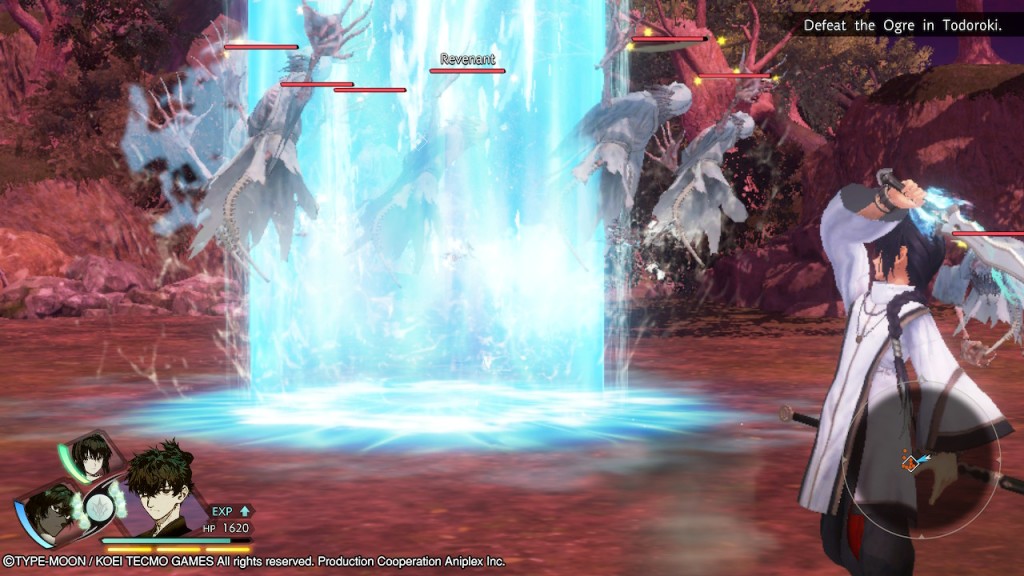
Requiring special gems to use, Iori has some offensive and support magecraft in his arsenal. He can also use a powerful Valor Strike once its gauge has been filled. You mainly control Iori in battle, but you can still use Saber’s Affinity Techniques when you use him. Damaging enough enemies to fill the Substitution Gauge allows you to temporarily control Saber (or other Servants later on). I think I preferred to use Saber more than Iori because it felt easier to do consistent damage.
There are three difficulty levels, and I played using the middle difficulty; these battles didn’t seem too difficult to me. I was only defeated once or twice, and when that happens you can load a save or retry. They added Shell Gauges to some of the stronger “regular” enemies and the bosses, which must be depleted before you can damage their HP directly. Bosses’ Shell Gauges return after you damage them enough. That didn’t necessarily make things harder so much as it made battles take longer.
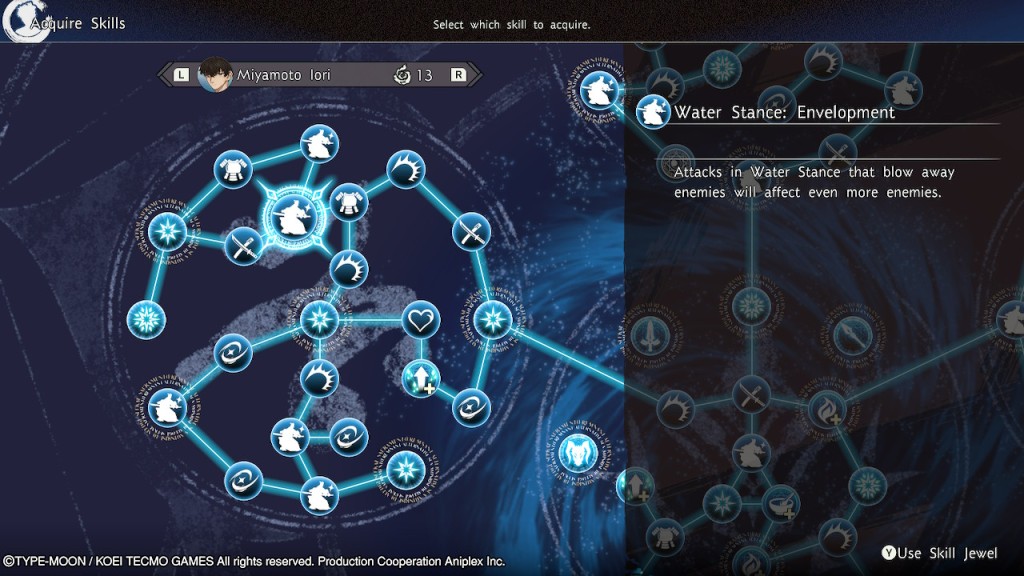
Perhaps the combat didn’t feel very difficult to me because I did some minimal (possibly unnecessary) grinding, and I was also diligent about upgrading my equipment and learning skills. Iori and Saber both gain skill points when they level up. You can also use Skill Jewels to increase their skill points. Skills range from stat increases to bonus effects to new abilities. Each node on the skill trees has some requirement to unlock that skill.
Another way to strengthen Iori is by changing out his sword components. There are four categories of “Mountings” for your sword, each with different stats, effects, and appearances. Iori set up a Magecraft Workshop in his small home in Asakusa, which can be used to enhance Mountings’ stats and effects. I really liked seeing how my sword’s appearance changed as I equipped different parts. My issue was that it seemed difficult to get a hold of enough improvement items to experiment with a variety of parts.
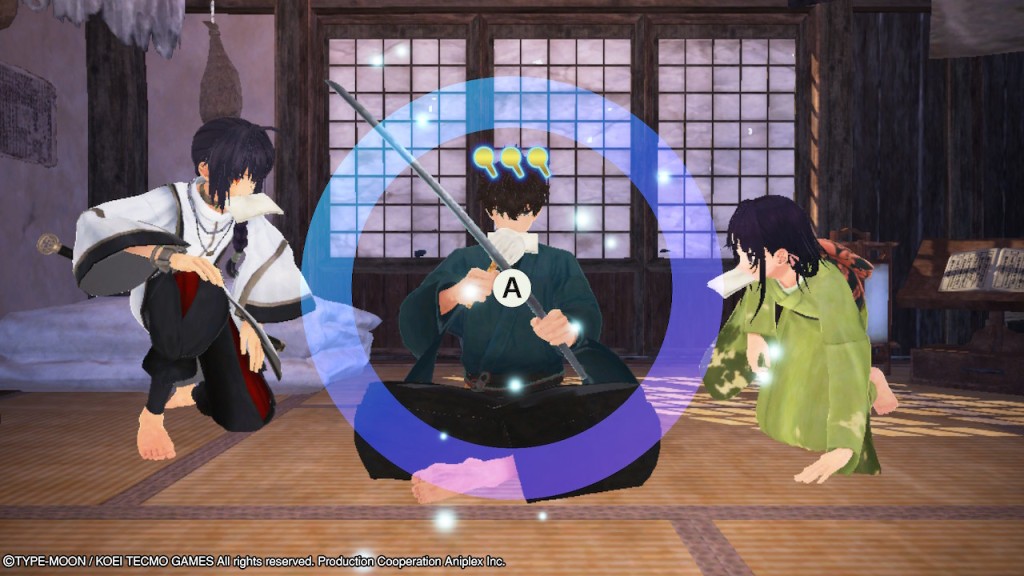
Any decent swordsman swordsperson will maintain their equipment; you can do the same and complete the sword maintenance mini game to increase the experience points you earn in the next few battles. The mini game itself wasn’t amazing, although I did find it interesting and appreciate its effects. They included neat cultural information on why the sword maintenance is done that way.
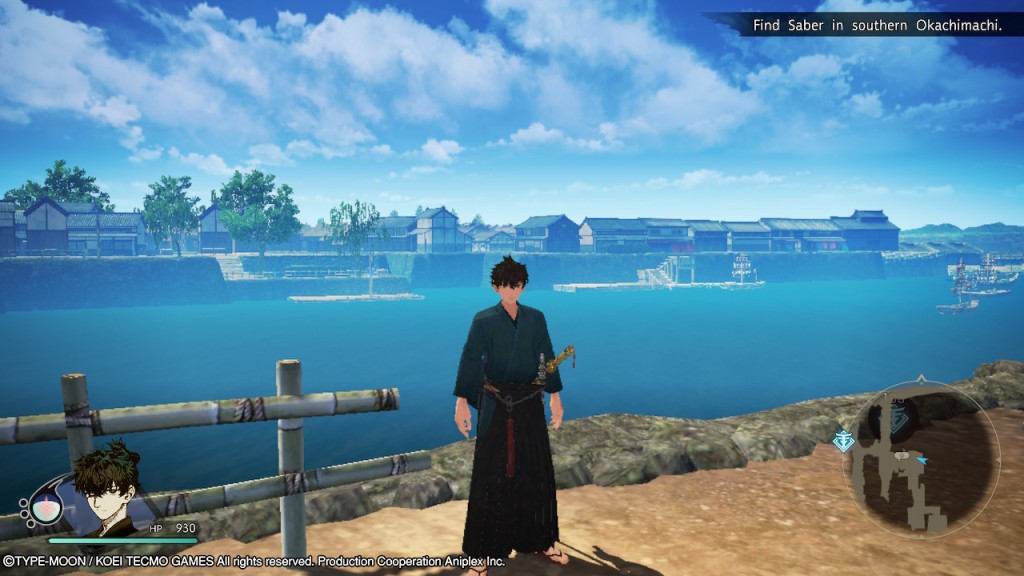
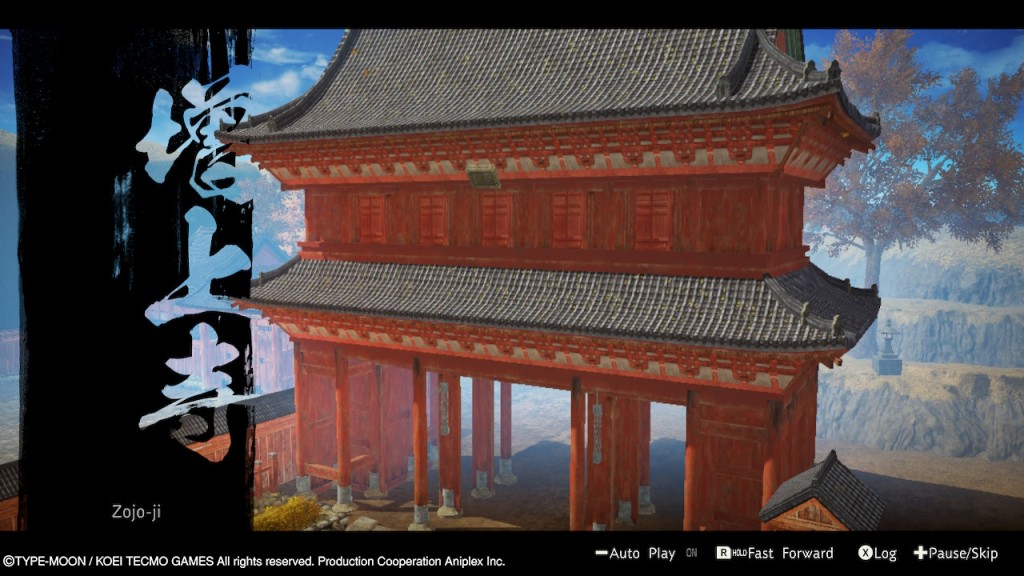
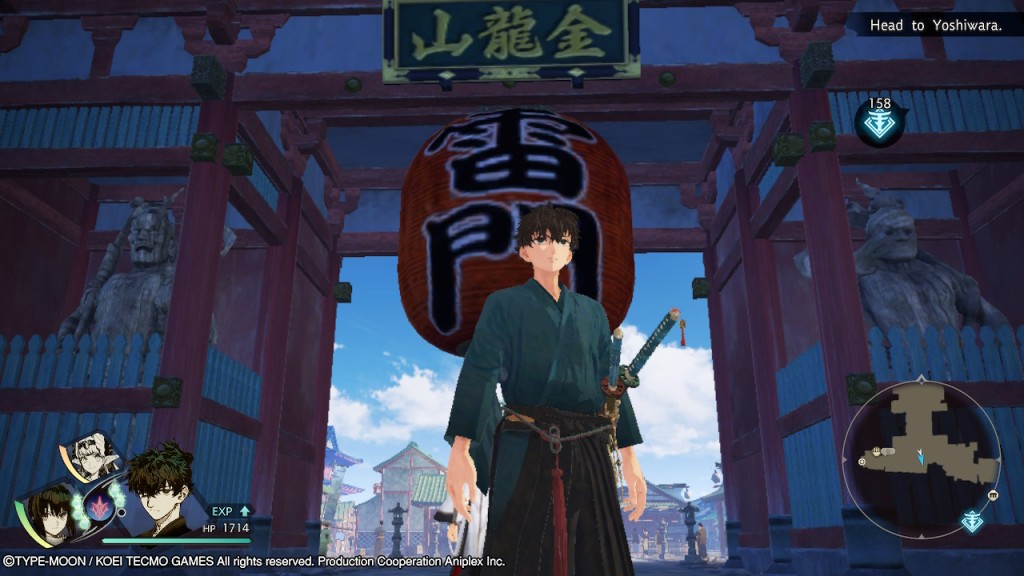
Renovating Iori’s Workshop at home definitely adds more useful functions for when you go out again. I wanted to keep exploring the area surrounding Iori’s home in Asakusa and beyond. The architecture and the environments are absolutely gorgeous, and they help establish the sense that you’re in seventeenth-century Edo. It was great to see the Sensouji Temple depicted in the game (I’ve actually been there before!).
General stores and food stalls also line the streets in each area. You can purchase crafting materials and Mounting parts at the general stores, and the food stalls sell dishes for use as healing items. People next to the food stalls often tell you about the dishes served there. I really felt like the game provides the player with a lot of detailed information on Japanese history and culture with its in-depth logbook containing character and location information.
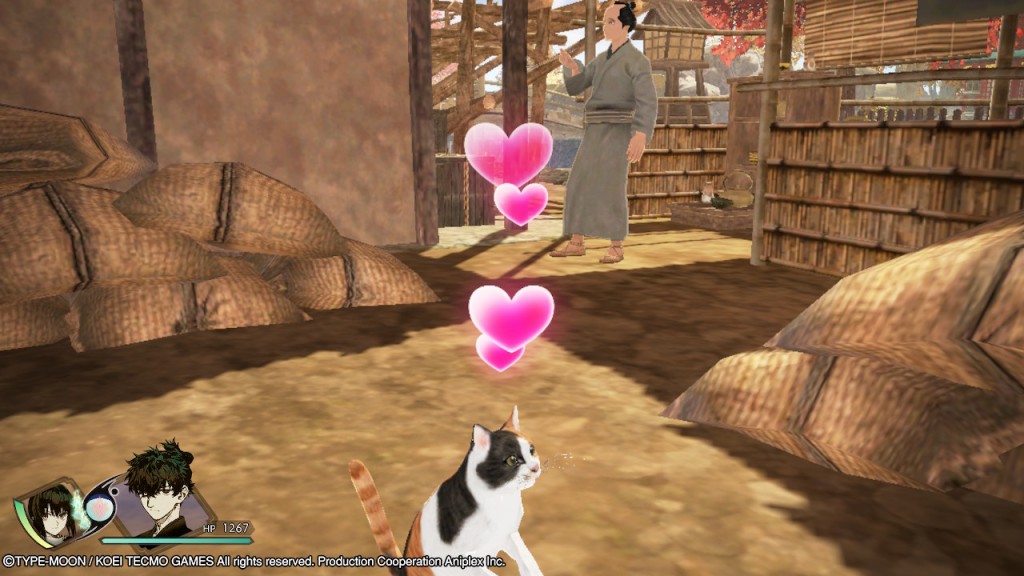
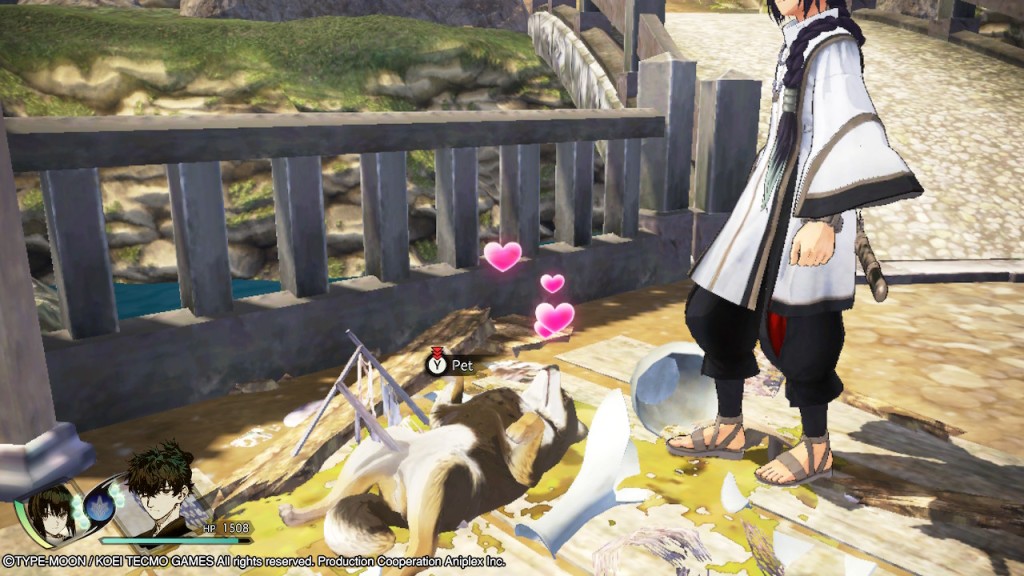
And for people of culture, enjoy petting dogs and cats around Edo, which will make you happy and restore your HP. 🥰
Although the loading screens in between each part of town are longer than I’d like, it’s otherwise pretty easy to get around Edo to track down information on the other Masters and Servants. They provide you with detailed maps and markers, and there’s a function that displays the path to your destination with a streak of light. As someone who’s very directionally-challenged even in games, this was appreciated.
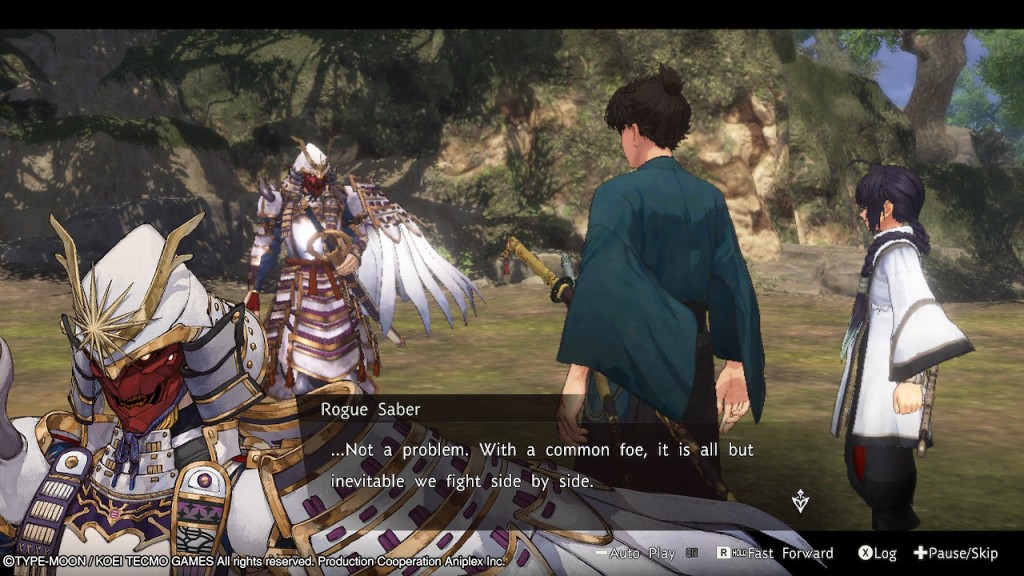
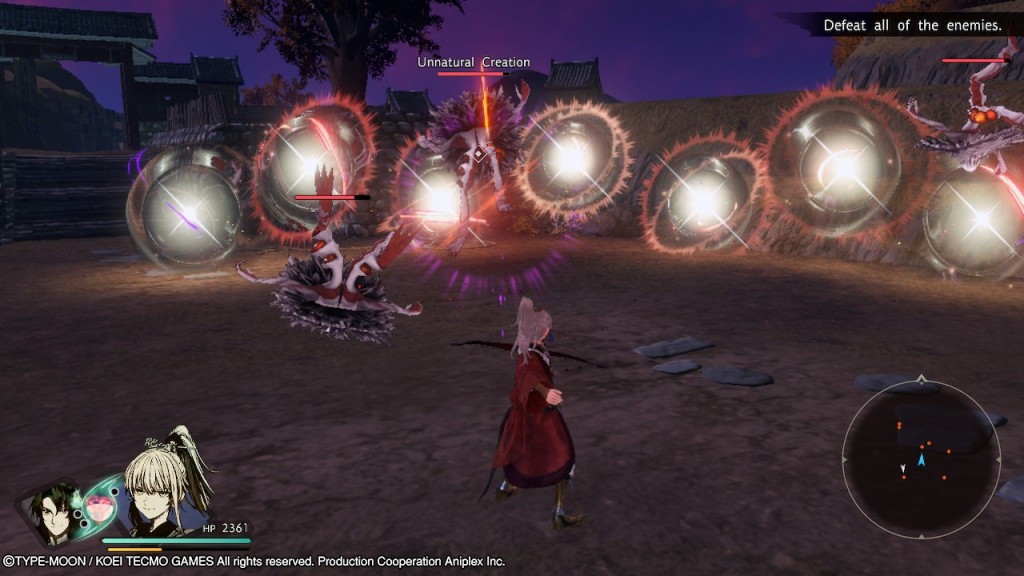
As you walk, jump, and sneak around, you may run into one of the eight Rogue master-less servants that were also summoned for the ritual. By completing “Digression” side quests, you can establish bonds with them, allowing you to summon and control them in battle. It was fun to experience the different play styles between Iori and the Servants.
These alliances will work in your favor whether you travel by foot or by connecting with Edo’s leylines. Capturing ley lines and increasing your magical power is a key factor in the battle for the Waxing Moon. When you connect with the ley lines, the objective is to capture an area’s Spirit Fonts and wrench power away from your enemies.
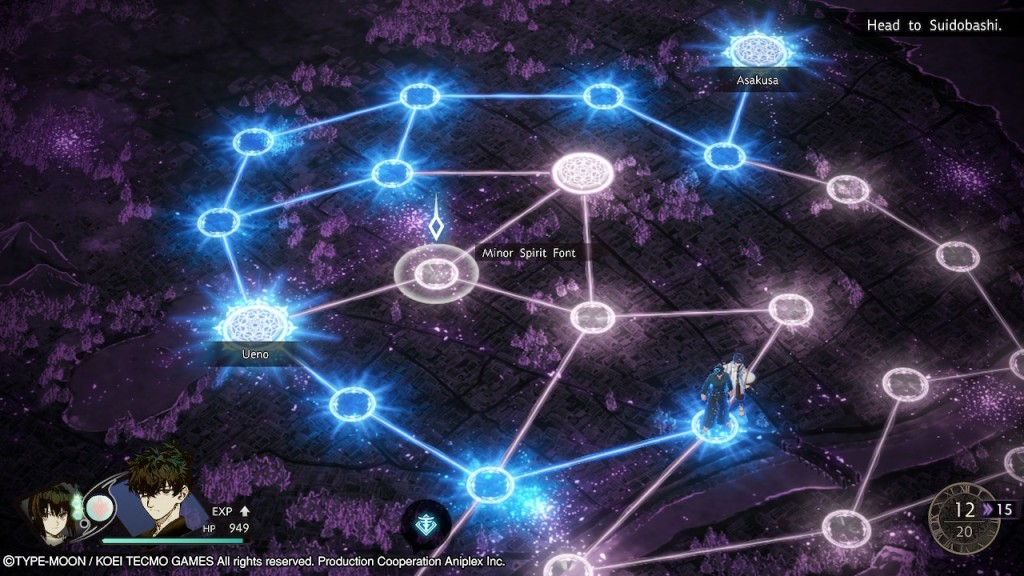
The Spirit Fonts are often protected by monsters, who move around the map in an attempt to take territory back. You may need to use special Mystic Codes to counter the enemies’ movements. Magical “bounded fields” also prevent you from immediately capturing some fonts, and you’ll have to capture other minor fonts before you can take them. Eventually the battles for Spirit Fonts become more and more strategic as enemies gain access to boats, and as larger amounts of enemies require you and Saber to split up.
The ley line maps add an interesting element to the game. You only use them in the lead-up to major battles, though. I really liked the animated scenes depicting the fighting between Servants. The character designs and their attacks are really cool. And Chapter 3’s ending was especially intense.
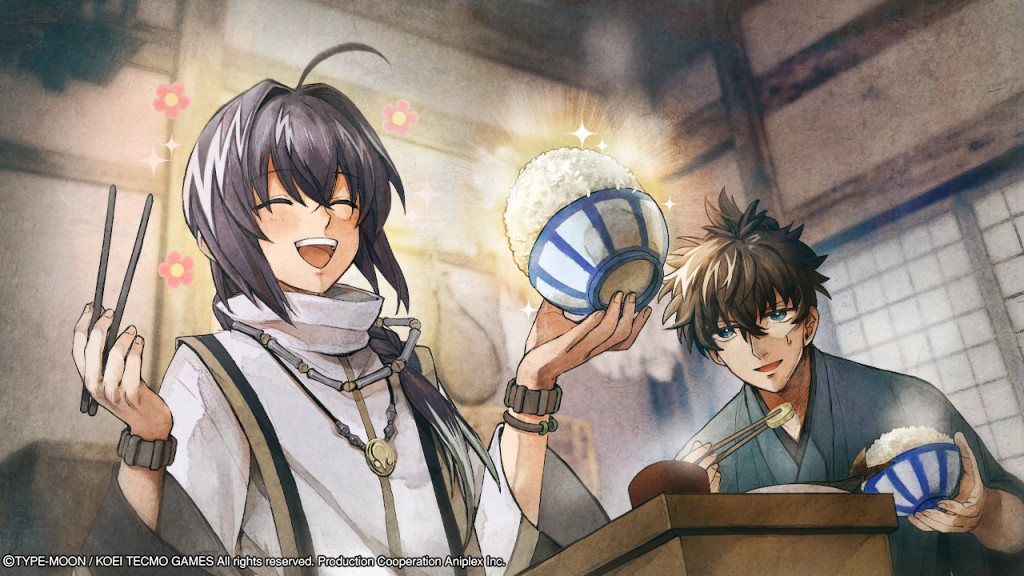
I found Iori to be a likable protagonist, and I enjoyed getting to know my allies as well. This made it even harder to say goodbye to the character(s) who may die as the story progresses. That being said, I don’t feel like we really get an in-depth look at the characters and their motivations.
It also doesn’t seem like they focus as much on discovering the Servants’ True Names and therefore their possible weaknesses, which was a little disappointing to me. You find out their True Names, but they don’t play that big of a part in the story. I did appreciate that the minor romance subplot was subtle, with an unexpected twist. There are also branching storylines and multiple endings, which I always like to see in games. (The short “joke” ending was funny.)
However, by the last few chapters the overall plot started to feel very unoriginal, and the ending I got was anticlimactic and seemed unfinished. I completed my first playthrough after around 42 hours – this included a large portion of the side content. From your second playthrough on you can carry over your save data, and they give you the option of starting in Chapter 2. Additional playthroughs allow you to play at the new “Sword Demon” difficulty level.
Clear data carries over the following to your next playthrough:
- Level
- Experience
- Some items
- Skill points & acquired skills
- “Learned actions”
- Completed Commissions & Trials
- Monster Log
- Workshop Renovation level
“Giant monsters,” which are much more powerful than normal monsters, also appear in subsequent playthroughs.
Overall Thoughts
Fate/Samurai Remnant is a really good addition to the Fate series, although it’s not without its flaws. The loading times and underdeveloped plot/characters were the biggest weaknesses for me, and battles start to feel more and more repetitive.
But even with underdeveloped characters, I still liked the glimpses I got of their personalities and backgrounds. The setting in seventeenth-century Edo made me really happy as someone that enjoys learning about history, and I loved the effort put into the buildings and cultural details.
I also appreciated the amount of side content in the game. There’s so much to do outside of the main storyline. I may not love the where the story went, but I can still say that I’m pleased with the inclusion of multiple routes. They’re adding even more content with the Season Pass too, which “will feature a new story, new Servants, new skills, new areas, new enemies, new Mountings, etc.” You can experience 3 new episodes when they’re released in April, July, and September 2024. I look forward to seeing what they add.

Leave a comment